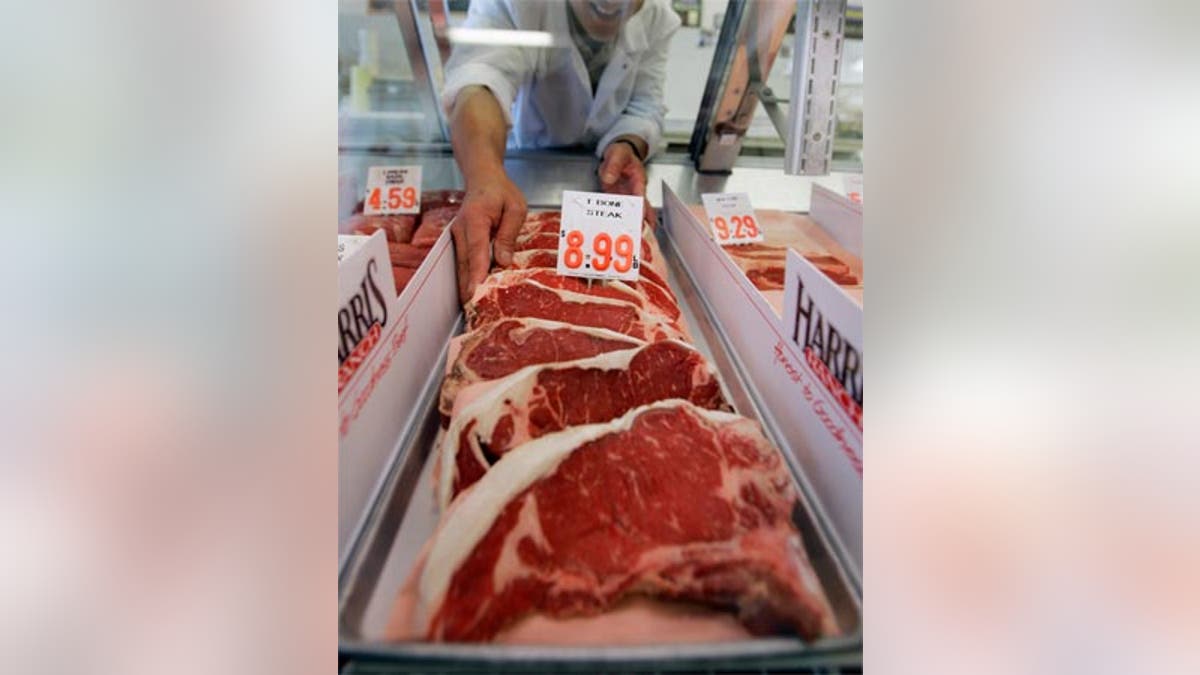
There is no manlier thing to get to grips with in the kitchen than a great hunk of meat. A slab appeals to something primal within us, something deep in our souls. Maybe it’s the hunter in us or maybe it’s just that it tastes so damn good, but whatever it is, we just want to get our hands on it.
In fact, a recent U.S. survey (Foodborne Disease Active Surveillance Network) of 14,000 adults confirmed that guys were far more likely to go for a plate of meat while women would stick with vegetables.
Regardless of why this is, one thing is for sure: As men, we can’t claim to rule the roast and then cook disastrous dishes. And the greatest of disasters could arise from mishandling and mistreating meat.
There are a few easily avoidable pitfalls when it comes to dealing with meat. The most important of our timeless meat dos and don’ts involves choosing your meat. However, temperature and storage should also be considered. Furthermore, attention should be paid to preparation.
How to choose your meat
Do: Look at the meat carefully. Choose meat with a slightly moist surface that smells fresh. The exception is dry-aged beef, which should be dark, browny-red on the outside and appear very dry. If you are buying beef from a reliable source (and forming a good relationship with your butcher is as important as any), then ask to try a smidgen of raw beef. Game is an exception and can smell fairly funky as it’s normally “hung” for quite a while to tenderize the meat. Choose meat that glistens but...
Don’t: Buy meat with ”fridge burn,” when it looks dry and fibrous. The same goes for sausages. Avoid greasy looking or very wet meat (unless it is wet-aged beef). If you can, give the meat a sniff — your nose is right next to your mouth for good reason. If it smells funny, don’t take the risk.
How you should store your meat
Do: Wash your hands before you start. Check the temperature of your fridge and store raw meat or poultry in sealed containers at the bottom of the fridge so any spillage won’t contaminate other food. Use a plastic Ziploc bag if you don’t have any Tupperware. If you are chilling cooked meat, allow it to cool naturally, but as quickly as possible (in a larder or cool room if you have one). Refrigerate in cling-wrap or aluminum foil.
Don’t: Add hot products to your fridge as they will raise its temperature causing bacterial growth and can stop the refrigerator from working entirely. Don’t leave meat uncovered in the fridge or at the top. Don’t salt meat you are storing, as this will draw out all the moisture making the meat dryer and getting less of a sear on the outside when it cooks.
How you should freeze and thaw your meat
Do: Plan — 95 percent of success in the kitchen is good planning and the other 95 percent is hygiene. Planning gives you time to do the things you need, such as thawing frozen meat slowly in the fridge until it’s completely defrosted. Freeze your meat as quickly as possible after buying it, making sure it is thoroughly sealed. Use thawed meat within two days (maximum) after thawing. You can freeze cooked meat. When possible, thaw in a sealed container to avoid run-over from the liquid leeched out in the thawing process.
Food can, contrary to popular belief, be frozen for years as long as it remains entirely frozen all the time; however, its texture can change (freezing destroys fibers in meat), so bear this in mind when doing freezing for long periods. Make sure the meat is at room temperature before cooking, let it rest out of the fridge for an hour or so. This will ensure even cooking.
Don’t: Do not rush it. Don’t defrost meat under hot water -- you risk food poisoning and destroying the quality of the meat as it will absorb water (which won’t make it moister during cooking). Never refreeze raw meat under any circumstances. Cook it, let it go cold and use it as cold cuts, in slaws or your leftover recipe of choice._________________________________________________________________________
More from AskMen.com:
_________________________________________________________________________
What meat you can eat pink
Do: Eat beef as rare as you like. In fact, carpaccio is a dish of entirely raw beef. Lamb can be eaten pink, although, choose a lean cut such as a cutlet as undercooked lamb fat is pretty nasty. Pork should always be cooked through thoroughly, apart from the incredible pork from Extremadura in Spain that can be served slightly pink. Eat game birds and meats pink (venison, duck, partridge, pigeon, and quail should all be served slightly underdone to retain moistness). Hamburgers, made with good beef, can be eaten pink too.
Don’t: Never eat pink chicken. The only place this is done is in Japan, where chickens are slaughtered that day and eaten. Still, many people get ill from it. Also, raw chicken, as we’ve all probably found out at some point, is disgusting and chewy. Don’t ever eat pink meat unless it comes from an entirely reliable source. In fact, don’t ever eat meat if you aren’t 100 percent sure where it came from.
Improperly handling meat
Primarily, you aren’t going to get invited to anyone’s dinner party if you poison guests at your own. And poisoning a girl on a first date is never going to make for a great relationship. Make sure everything is clean before you start (working in a professional kitchen, or even looking in one, you will get a feel for how neat and clean everything is and this makes service, or cooking for a dinner party, a whole lot easier).
Food poisoning occurrences double in the summer months, so take your time when barbecuing. Make sure you control the heat of the barbecue and start things in the oven if you want to be doubly sure. And use separate preparation boards for meat, fish and vegetables in your kitchen to avoid cross-contamination.







































